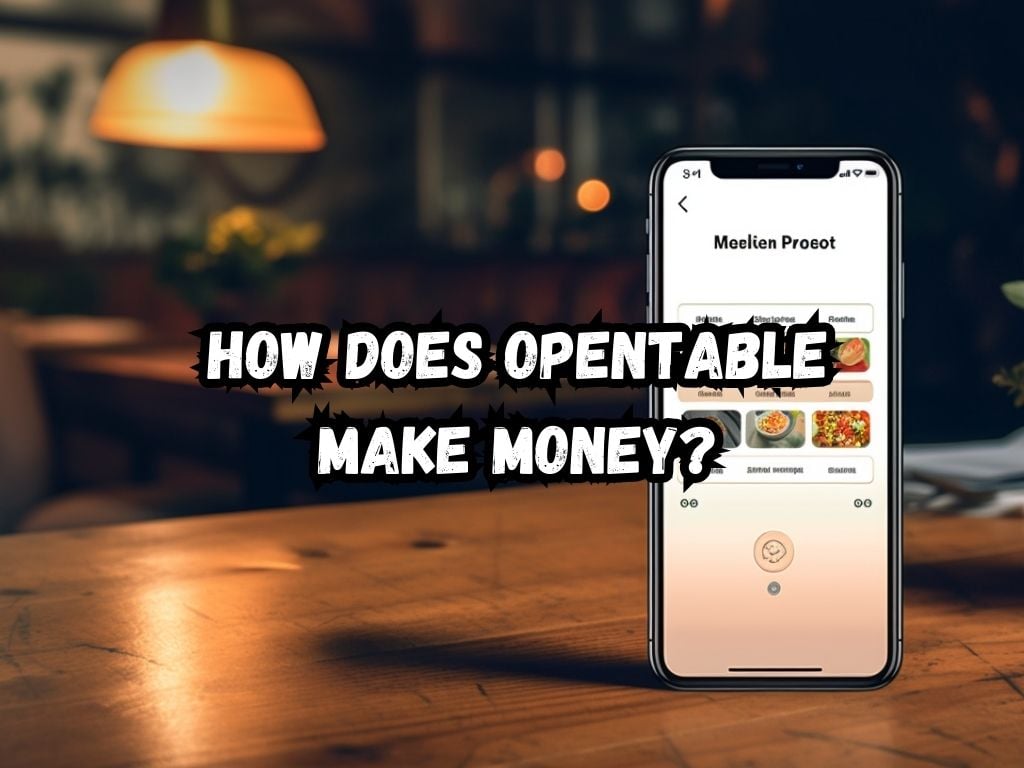OpenTable, an online restaurant reservation system, has revolutionized the way people book dining reservations.
To understand the business model of OpenTable and its revenue generation methods is crucial for both restaurant owners and users of the platform.
In this article, we will delve into the ins and outs of OpenTable’s business model, explore its range of services, analyze its marketing strategies, and evaluate its financial successes.
How Does OpenTable Make Money?
OpenTable’s Business Model
OpenTable operates on a commission-based model, deriving its revenue primarily from reservation fees charged to restaurants. When customers make reservations through OpenTable, the platform charges the restaurant a fee, usually a percentage of the bill or a fixed fee per diner.
This allows OpenTable to generate revenue as a middleman between restaurants and diners, providing a seamless reservation process for both parties.
Reservation Fees Charged to Restaurants
To provide the convenience of online reservations, OpenTable charges restaurants a fee for each booking made through the platform. The fee structure can vary based on factors such as location, size of the restaurant, popularity, and reservation volume.
Generally, the fees are set as a percentage of the bill or a fixed fee per diner. These fees contribute significantly to OpenTable’s revenue generation.

Restaurant Services by OpenTable
In addition to facilitating reservations, OpenTable offers a comprehensive range of services designed to assist restaurants in efficiently managing their operations.
Table Management
One of the primary services OpenTable provides to restaurants is a sophisticated table management system. This system streamlines the reservation process by allowing restaurants to manage their available tables and optimize seating arrangements.
The platform offers features such as real-time table availability, waitlist management, and automated table assignment. By efficiently managing tables and streamlining operations, restaurants can provide enhanced customer service, resulting in increased revenue and customer satisfaction.
Guest Management
OpenTable also provides guest management services, allowing restaurants to track and manage their guests’ dining preferences and histories. This data enables restaurants to provide personalized experiences, enhancing customer loyalty and driving repeat business.
With OpenTable’s guest management system, restaurants can maintain a comprehensive guest database, manage special requests, and send targeted promotions to encourage return visits.
Reservation Management
OpenTable’s reservation management system helps restaurants efficiently handle the entire reservation process. From accepting reservations to confirming them and managing last-minute changes, this system simplifies operations for restaurants.
It offers tools for managing cancellations, no-shows, and even integrating with the restaurant’s POS system for efficient order and payment processing. By automating reservation management, OpenTable allows restaurants to focus on providing exceptional dining experiences to their guests.
Consumer Services by OpenTable
OpenTable not only benefits restaurants but also provides an array of services for consumers, enhancing their dining experiences and simplifying the reservation process.
Restaurant Search and Booking
OpenTable’s platform enables users to search for restaurants based on various criteria such as cuisine, location, price range, and availability. With access to an extensive database of restaurants, users can discover new dining experiences, view menus, read reviews, and make convenient online reservations.
The platform enhances the dining journey by providing users with valuable insights and convenient booking options.
Reviews and Ratings
OpenTable’s platform also serves as a hub for restaurant reviews and ratings. Users can provide feedback and ratings based on their dining experiences, helping others make informed decisions.
Restaurants with positive reviews and high ratings attract more customers through the OpenTable platform, further solidifying their reputation and increasing revenue.
Marketing and Advertising
OpenTable employs various marketing and advertising strategies to attract both restaurants and consumers, boosting its user base and revenue.
Partnerships and Collaborations
OpenTable forms partnerships with popular websites, travel agencies, and review platforms to expand its reach and increase brand visibility.
These collaborations allow OpenTable to tap into new customer pools, attract more diners, and generate additional revenue from reservations. By partnering with trusted platforms, OpenTable maximizes its exposure and drives further growth.
Digital Marketing Campaigns
OpenTable leverages targeted digital marketing campaigns to promote its services and engage its target audience. These campaigns utilize social media platforms, email marketing, and online advertisements to reach users interested in dining out.
By delivering personalized and relevant content, OpenTable increases brand awareness and encourages users to make reservations through their platform.
Promotions and Loyalty Programs
To incentivize both restaurants and diners, OpenTable offers promotions and loyalty programs. These include special offers, discounted meals, and reward programs for frequent diners. By incorporating gamification and exclusive benefits, OpenTable encourages repeat usage and instills loyalty among both restaurants and consumers.

OpenTable’s Financials
OpenTable has achieved significant financial success since its establishment, driven by its strong business model and continuous growth.
Revenue Growth
OpenTable’s revenue primarily stems from commission fees charged to restaurants for reservations made through the platform. The specific commission structures can vary based on factors such as location, restaurant popularity, and reservation volume.
Recent years have witnessed consistent revenue growth for OpenTable, mainly due to a substantial increase in the number of reservations made through the platform. This growth can be attributed to OpenTable’s continuous efforts to improve its services, expand its restaurant network, and capitalize on emerging market trends.
Comparison with Industry Peers
When comparing OpenTable’s financials with other players in the online restaurant reservation industry, it is evident that OpenTable remains a dominant force. Its reputation, large user base, and extensive restaurant network give it a competitive edge in the market.
Furthermore, OpenTable’s continuous innovation and investment in technology have allowed it to stay ahead, resulting in sustained revenue growth and financial success.
Frequently Asked Questions
How much commission does OpenTable charge restaurants?
OpenTable’s commission fees vary and are generally determined based on factors such as location, popularity, and reservation volume. The fees can either be a percentage of the total bill or a fixed fee per diner.
Who are the main competitors of OpenTable?
OpenTable faces competition from various players in the online restaurant reservation industry, including Resy, Yelp’s reservation system, and Bookenda.
How many restaurants are listed on OpenTable?
OpenTable’s extensive network includes over 60,000 restaurants globally. This wide range of dining options offers consumers ample choices and ensures a diverse selection across different cuisines and locations.
How does OpenTable handle cancellations and no-shows?
OpenTable provides restaurants with tools to manage reservations efficiently, including handling cancellations and no-shows. Restaurants can set policies and penalties to minimize any potential revenue loss caused by last-minute changes.
What are the benefits of using OpenTable for consumers?
OpenTable provides consumers with a user-friendly platform, allowing them to explore various dining options, read reviews, and make convenient online reservations. Users can earn rewards and enjoy seamless dining experiences, maximizing their overall satisfaction.
Conclusion
OpenTable’s success in the online restaurant reservation industry can be attributed to its robust business model, wide range of services, effective marketing strategies, and continuous financial growth.
The commission-based revenue model, coupled with its commitment to providing efficient services for both restaurants and consumers, has solidified OpenTable as a leading platform in the dining industry.
As OpenTable continues to adapt, innovate, and expand its offerings, it is poised to remain at the forefront of online restaurant reservations while enhancing the dining experiences of millions of users worldwide.


 Tags:
Tags:










